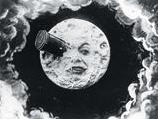Lunar bombing boondoggle reveals our dark side
by Rob Parsons |
 |
 |
Forty summers ago, as Neil Armstrong prepared to make his historic giant leap, my family and households around the world gathered to witness the monumental occasion. Though the slowscan lunar transmission images were grainy and the sound distorted, the importance of the moment on that hot July evening was clear enough. Armstrong's voice brought a collective sigh of relief to millions of viewers "Houston, Tranquility Base here," spoke the flight's commander. "The Eagle has landed."
Standing in stark contrast to Apollo 11's unifying lunar odyssey was last week's $80 million NASA mission that sent a spacecraft slamming into the moon's surface, looking for signs of ice crystals. Further explanations of the rationale behind the LCROSS (Lunar CRater Observation and Sensing Satellite) project make it sound even more bizarre: should there be sufficient evidence of trapped water in the debris plume kicked up by slamming the upper stage of the Centaur rocket near the moon's south pole, it could serve as a possible landing and habitation site (since water could be "manufactured" from the hydrogen-based material) for future moon missions.
"At the core of NASA's future space exploration," states the agency's Web site, "is a return to the moon, where we will build a sustainable long term human presence. As the space shuttle approaches retirement and the International Space Station nears completion, NASA is building the next fleet of vehicles to bring astronauts back to the moon, and possibly to Mars and beyond."
Not to rain on your parade, NASA, but we haven't managed to "build a sustainable long term human presence" here on Earth. So why shoot for the moon?
The moon landing in the summer of 1969, a month before Woodstock, transfixed the country and the world in a way LCROSS never will. Making good on President John Kennedy's lofty goal set earlier that decade, the Apollo 11 mission signified American technological supremacy in the Cold War competition with the Soviet Union, which put the first man in space, cosmonaut Yuri Gagarin, in 1961.
It offered a welcome respite from the deepening disaster of the Vietnam War, civil rights rioting and the assassinations of two Kennedys and Dr. Martin Luther King, Jr. For a moment, America, rocked by political and social upheaval, once again believed in its greatness, ingenuity and promise.
Four decades later, we could use a dose of that sort of positivity. Last November, a ripple circled the globe—the leading edge of a surge of hopefulness—as our country elected a brilliant orator, a man carrying a message of hope in the face of mounting fiscal, environmental and political crises.
Yet President Obama alone is not capable of lifting the veil of stupification and cynicism that has shrouded our country. Even the unexpected pronouncement that our nation's leader had been awarded the Nobel Peace prize merely opened new lines of political sniping from his detractors.
One liberal voice, documentary filmmaker Michael Moore, came to his defense. "Obama is moving too slow for most of us," wrote the man whose movies have taken aim at corporations, gun control, reaction to 9/11, health care and most recently capitalism itself. "[B]ut he needs to know we are with him and we stand by him as he attempts to turn eight years of sheer madness around. Who could do that in nine months? Superman?
"The world has stood by in utter horror for the past eight years," continued Moore, "as they watched the descendants of Washington, Lincoln, and Jefferson light the fuse of their own self-destruction. We flipped off the nations of this planet by abandoning Kyoto and then proceeded to melt eight more years of the polar ice caps. We invaded two nations that didn't attack us, failed to find the real terrorists and, in effect, ignited our own wave of terror. People all over the world wondered if we'd gone mad."
Is it not, then, further lunacy to pursue a Star Trek fantasy for a lunar space station, when we're still searching for intelligent life on Earth? And, alas, scientists and astronomers viewing the LCROSS impact around the world—hoping to see bright flashes or plumes of debris—saw….nothing. Instead, NASA will analyze data from the mission's infrared sensor and the world's largest telescopes, including the 88-inch University of Hawaii instrument at Mauna Kea.
A month ago, Gov. Lingle told the Hawaiian Chamber of Commerce on Maui that she supports two advanced technology solar telescopes, on Haleakala and the Big Island, as they could bring 100 construction jobs and needed revenue. It was a further sign of her misplaced priorities, in the wake of announcements of drastic budget cuts and furloughs.
Perhaps it's time to redirect the $300 million-per-month NASA moon program, announced by President George W. Bush in the wake of the 2003 space shuttle Columbia disaster. Many have said we need an Apollo program-like effort to set our course for renewable energy. Certainly countless other issues could benefit from that level of funding and attention: education, health care, humanitarian aid, disaster relief, rainforest preservation, even seeking to free Tibet through diplomatic efforts. Fill in the blank for a worthwhile cause, however lofty, that you'd propose to spend $300 million on every month.
Think big. It's possible to reach for the stars while keeping your feet planted on solid ground.